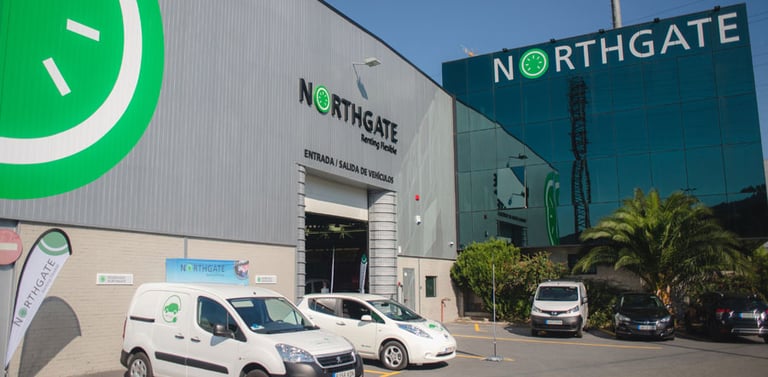Purplebricks Group plc (LON:PURP) is the topic of conversation when Zeus Capital’s Research Director Robin Savage caught up with DirectorsTalk for an exclusive interview.
Q1: Purplebricks Group, they’ve just reported their full year results to 30th April, can you talk us through the key points?
A1: First of all, it’s important to recognise these results show the Australian and US units as discontinued, they’ve now been closed down, they do include the Canadian unit which was sold in July for C$60.5 million (£35 million).
I think investors should focus on the results of the UK unit so there we had:
- 11% fall in UK revenue to £80.5 million, from just over £90 million for the year to April 2019. This was due to a fall in the number of instructions, a 23% fall which was really due to the impact in March and April of the COVID uncertainty and lockdown but offset by an increase in the average revenue per instruction which rose 12% to £1,394.
- Group profit in the UK improved to 64.1%, that’s an improvement in gross profit from 63.0% last year and the marketing costs to revenue improved, it fell from just under 30% to 25.6% of revenue.
- Spend on overheads did go up because the new management team is investing in digital capacity and innovation. The UK operating costs increased 32% to £26.2 million and the adjusted EBITDA fell 53% to £4.8 million.
So, in terms of the current trading, there has been an improvement after the end of lockdown in that July, the company recorded over 7,000 instructions which is a record and is an average of 225 a day. The outlook for the second half of year remains uncertain so we have to be quite cautious about what might happen, for example if there’s a second lockdown or if other uncertainties come along.
Just bear in mind also, the company report revealed that they had commissioned independent research from a company called TwentyCi and that revealed that they had a 3.9% market share of instructions and a 5.1% share of properties sold by volume
Importantly, the balance sheet is strong ,it had £66 million of net cash on 15th July 2020 following the sale of the Canadian business.
So, these results provide a good basis for revising our forecast for the year to 2021 and looking out beyond that.
Q2: So how do you see the forecasts for this year and next?
A2: First of all, let’s me consider the forecast for the current year. The results, because it cut to the end of April, there will be not only a negative impact for last year but also a negative impact, because of lockdown, for the current year.
There has been recovery in July but we shouldn’t take that as being indicative for the whole year so because some certainty remains, we lift our expectation from 40,000 to 50,000 instructions this year. If we weren’t quite so uncertain, we would’ve probably have gone higher.
So, just bear in mind, 50,000 instructions is a 12-month average of 140 instructions a day:
- In Q1, I think there was about 170 on average a day.
- I think in Q2, we’re going for something like 140 a day
- Q3, which will include Christmas, we think is going to be more like 100 instructions a day
- In Q4, which should be a good Q4, we are expecting 150 instructions a day
Obviously, all of this is contingent upon the way in which the housing market develops so
So, that’s where we’re looking in terms of the number of instructions so something like 50,000 instructions for the year on which we are operating this year.
We are assuming that the average revenue per instruction just nudges up from just under £1,400 to £1,400 so really no improvement there. That is a prudent approach, it could well be that there is some improvement but that obviously depends on how it turns out.
We expect the gross profit margin which rose from 63% in 2019 to 64% last year to be 63% so there’s potential for that to be slightly higher than forecast.
We expect the marketing to revenue ratio to improve further so it fell from just under 30% to from 25.5% and we are forecasting 24% for the current year.
In terms of the EBITDA, we are expecting £4 million of EBITDA which some low single digits but that could well improve as it develops.
So, I think that’s probably the point that there is potential for upgrades from here and we really ought to be monitoring how the Q2 to the end of October performs before we think about formally upgrading the numbers.
Q3: So, in a more normal year, what sort of revenue and profit do you think Purplebricks Group could deliver and what value should investors place on PURP shares at the moment?
A3: Well, the first thing to think about is what is the cash position of a stock, how financially sound it is and then secondly, what the scope is for the revenues and profits to either hit or exceed expectations.
So, as far as the company is concerned, it has no debt, it’s got £66 million net cash which is 21p a share so it’s very well capitalised and we’ve actually forecast a slight reduction because we’re expecting management team to invest in any circumstances but if they year turns out how we’d like it to, it should be a broadly neutral year.
In terms of the number of instructions, we think the company should benefit from both market rise and a rise in market share as increasing numbers of people want to transact online or digitally and I think that movement will have been proved because the way in which people have reacted to the COVID lockdown.
The Group has, at the moment, over 10% market share in parts of the UK, they mentioned this morning that in Scotland they have an 11% share, they have a good market share in Central and the North of England but it has a lower market share in London and the South. Management is working to increase the market share throughout the regions through further innovation and improvements to their internal management.
With 20% more instructions, I can envisage the company delivering over £129 million of revenue and a 20% operating margin. That may not be this year but I think it should be run rate by the end of the financial year or for 2021.
So, obviously, with 100,000 transactions at some point, which would be twice the number of transaction we’re forecasting for this year, and with a slightly higher average revenue per instruction of £2,000, the revenue would be more like £200 million which is 65p a share and the gross profits 63% and the actual profitability probably more like 15p a share, post-tax.
So, investors thinking about valuing PURP on the basis of an operating margin of a 25% which is obviously higher than that reported for last year and expected for this year which is more like 6% as they are investing. On a more mature operating margin, let’s say 25%, a price to revenue of over 2.5 times is the equivalent of an EBITDA multiple of 10 times and PE ratio of 12.5 times.
So, a 2.5 times revenue is a perfectly reasonable multiple to be thinking of so with net cash of over 20p a share and revenue, at the moment, of 24p rising to 50p over time, I think a valuation of 50p is very undemanding.











































